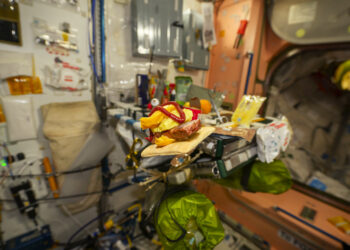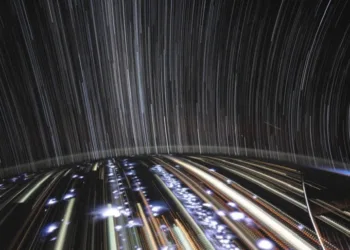During her inaugural mission to space, NASA astronaut Nichole Ayers has met three robots stationed aboard the International Space Station (ISS).
“We hit the ground running (or floating??) here on the space station,” Ayers, who arrived at the ISS a little over a week ago, shared on X. “Along with gathering data for one of the research studies, I assisted in loading some software onto the Astrobees. This is Bumble!”
We hit the ground running (or floating??) here on @Space_Station! In addition to data collection for one of the studies, I got to help load some software onto the Astrobees. This is Bumble!
These robots are a technology demonstration meant to assist astronauts with routine tasks… pic.twitter.com/RBTQPkphyx
— Nichole “Vapor” Ayers (@Astro_Ayers) March 24, 2025
As Ayers explained, the Astrobee robots are part of a technology demonstration designed to aid ISS astronauts with everyday tasks. These tasks include inventory management, documenting experiments, and moving cargo, allowing astronauts to focus on responsibilities that require a human touch.
The compact, cube-shaped flying robots were developed at NASA’s Ames Research Center in Silicon Valley and were sent to the ISS in 2019.

The Astrobee robots are equipped with various cameras and sensors for navigation, along with a touchscreen, speaker, and microphone. They even house a mechanical arm that can be fitted with different tools.
Rather than drifting aimlessly, these robots utilize a fan propulsion system to move in designated directions. Their onboard battery powers both the fans and other components, and when the battery runs low, the robot autonomously navigates to a docking station to recharge.
According to NASA, “Robots will play a crucial role in the agency’s mission to return to the moon and other deep space explorations. Tools like Astrobee have the potential to become caretakers for future spacecraft, maintaining systems and ensuring smooth operations while the crew is away.”
One of the ISS’s most recognized robotic tools is the Canadarm2, a 17.6-meter-long robotic arm that has been attached to the exterior of the ISS since 2001. It performs essential tasks such as moving supplies, equipment, and supporting astronauts during spacewalks. Earlier this year, NASA released footage of astronaut Suni Williams using the Canadarm2 during a spacewalk 250 miles above London.



